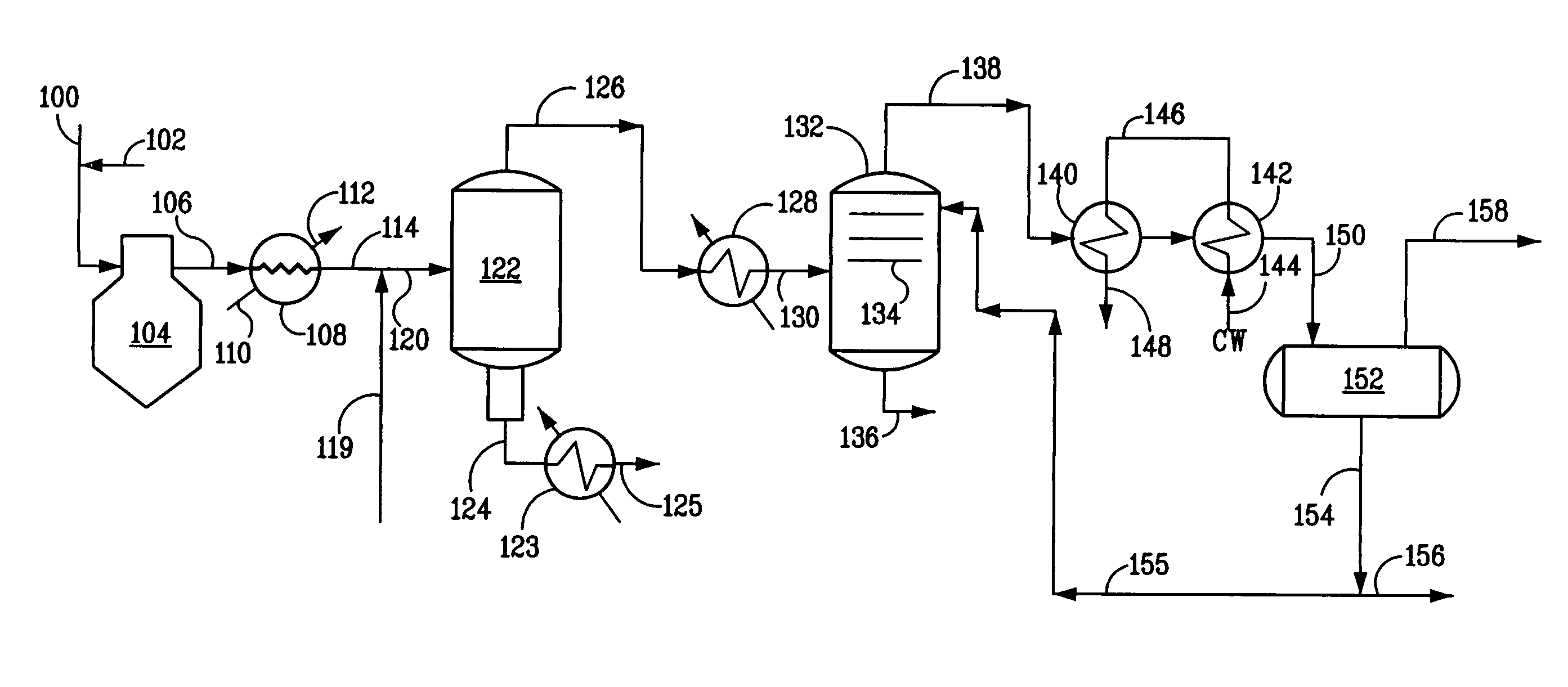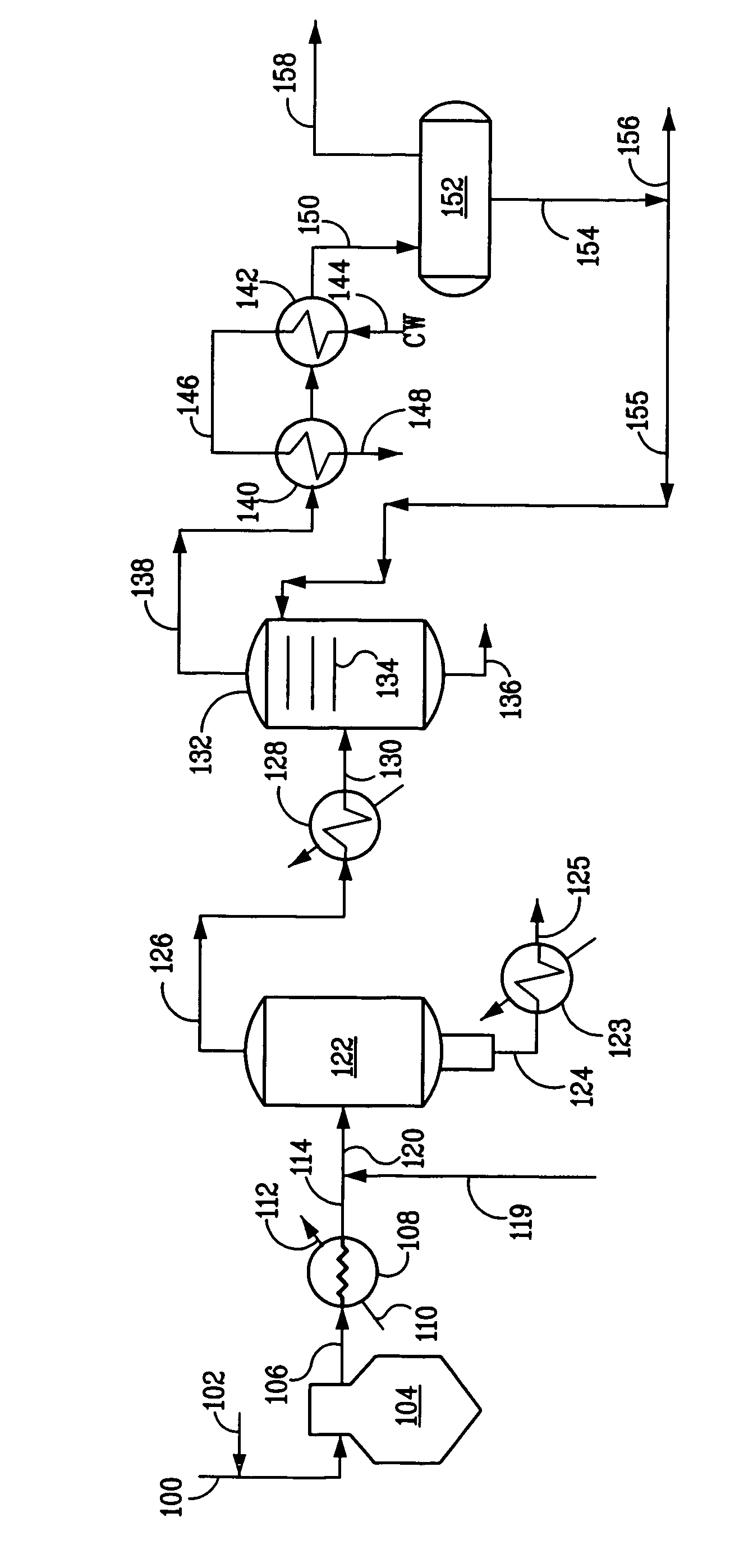Method for processing hydrocarbon pyrolysis effluent
a technology of hydrocarbon pyrolysis and effluent, which is applied in the direction of hydrocarbon oil cracking process, hydrocarbon oil treatment products, lighting and heating apparatus, etc., can solve the problems of inability to use conventional heat exchangers, inability to separate relative small amounts of tar from water quench, and inability to achieve satisfactory steam cracking techniqu
- Summary
- Abstract
- Description
- Claims
- Application Information
AI Technical Summary
Benefits of technology
Problems solved by technology
Method used
Image
Examples
Embodiment Construction
[0049]The present invention provides a low cost way of treating the gaseous effluent stream from a hydrocarbon pyrolysis reactor so as to remove and recover heat therefrom and to separate C5+ hydrocarbons, providing separate pyrolysis gasoline and gas oil fractions (which may be suited to use as a quench oil), as well as the desired C2-C4 olefins in the effluent, without the need for a primary fractionator.
[0050]Typically, the effluent used in the method of the invention is produced by pyrolysis of a hydrocarbon feed boiling in a temperature range, say, from about 40° to about 704° C. (104° to 1300° F.), such as naphtha or gas oil. For example, the effluent used in the method of the invention is produced by pyrolysis of a hydrocarbon feed having a final boiling point above about 180° C. (356° F.), such as feeds heavier than naphtha. Such feeds include those boiling in the range from about 177° to about 538° C. (350° to 1000° F.), say, from about 204° to about 510° C. (400° to 950° F...
PUM
| Property | Measurement | Unit |
|---|---|---|
| temperature | aaaaa | aaaaa |
| temperature | aaaaa | aaaaa |
| temperature | aaaaa | aaaaa |
Abstract
Description
Claims
Application Information
 Login to View More
Login to View More - Generate Ideas
- Intellectual Property
- Life Sciences
- Materials
- Tech Scout
- Unparalleled Data Quality
- Higher Quality Content
- 60% Fewer Hallucinations
Browse by: Latest US Patents, China's latest patents, Technical Efficacy Thesaurus, Application Domain, Technology Topic, Popular Technical Reports.
© 2025 PatSnap. All rights reserved.Legal|Privacy policy|Modern Slavery Act Transparency Statement|Sitemap|About US| Contact US: help@patsnap.com


